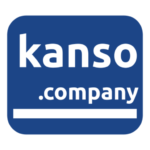Management boards consider the strategy for three months.
They take three weeks to put the strategy on paper.
Management is given three days to respond to this.
Employees are told in three hours.
They have three minutes to understand and three seconds to ask questions.
Does it work like this? Yes and no.
Yes
Yes, there are organizations that try to speed up and implement changes in this way. Yes, it works if you have chosen a “cold” way of changing. Cold way of changing can work in situations where you have to act really fast. The positive effects of cold change generally have a short-lived effect.
No
No, it does not work if you want to take the organization along in a “warm” way. If you want to make use of the knowledge and skills of the entire organization, it is evident to involve the organization in the strategy development. Employees who are in direct contact with customers (or forced customers in the case of government and municipalities) are often the first to see changes in customer behavior. This may be a reason to change the strategy. As a primary task, boards always keep a sharp eye on macro changes (including innovations, technology, laws and regulations, culture) and changes in the market. And ensure a balance between internal changes (such as working more innovatively) and changes from the macro or market. The strategy is determined in collaboration with the entire organization. 333333 turns 3: in 3 months everyone has contributed to the strategy and implementation can be started immediately.
No-brainer
It seems like his no-brainer, from 333333 to 3. Practice still shows that there is no conscious choice for a cold change and that determining strategy is seen as something exclusive for management, external experts and staff departments. If all stakeholders are happy and there are results, well why change?
